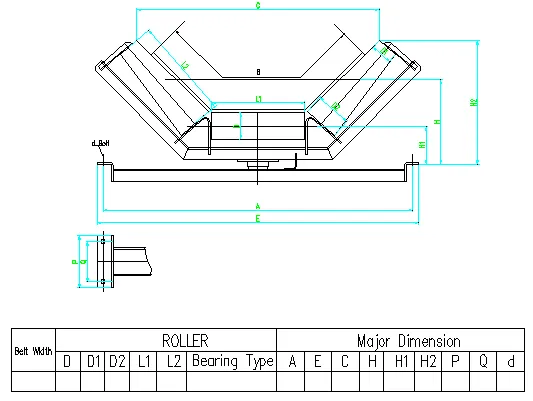 Afrikaans
Afrikaans  Albanian
Albanian  Amharic
Amharic  Arabic
Arabic  Armenian
Armenian  Azerbaijani
Azerbaijani  Basque
Basque  Belarusian
Belarusian  Bengali
Bengali  Bosnian
Bosnian  Bulgarian
Bulgarian  Catalan
Catalan  Cebuano
Cebuano  Corsican
Corsican  Croatian
Croatian  Czech
Czech  Danish
Danish  Dutch
Dutch  English
English  Esperanto
Esperanto  Estonian
Estonian  Finnish
Finnish  French
French  Frisian
Frisian  Galician
Galician  Georgian
Georgian  German
German  Greek
Greek  Gujarati
Gujarati  Haitian Creole
Haitian Creole  hausa
hausa  hawaiian
hawaiian  Hebrew
Hebrew  Hindi
Hindi  Miao
Miao  Hungarian
Hungarian  Icelandic
Icelandic  igbo
igbo  Indonesian
Indonesian  irish
irish  Italian
Italian  Japanese
Japanese  Javanese
Javanese  Kannada
Kannada  kazakh
kazakh  Khmer
Khmer  Rwandese
Rwandese  Korean
Korean  Kurdish
Kurdish  Kyrgyz
Kyrgyz  Lao
Lao  Latin
Latin  Latvian
Latvian  Lithuanian
Lithuanian  Luxembourgish
Luxembourgish  Macedonian
Macedonian  Malgashi
Malgashi  Malay
Malay  Malayalam
Malayalam  Maltese
Maltese  Maori
Maori  Marathi
Marathi  Mongolian
Mongolian  Myanmar
Myanmar  Nepali
Nepali  Norwegian
Norwegian  Norwegian
Norwegian  Occitan
Occitan  Pashto
Pashto  Persian
Persian  Polish
Polish  Portuguese
Portuguese  Punjabi
Punjabi  Romanian
Romanian  Russian
Russian  Samoan
Samoan  Scottish Gaelic
Scottish Gaelic  Serbian
Serbian  Sesotho
Sesotho  Shona
Shona  Sindhi
Sindhi  Sinhala
Sinhala  Slovak
Slovak  Slovenian
Slovenian  Somali
Somali  Spanish
Spanish  Sundanese
Sundanese  Swahili
Swahili  Swedish
Swedish  Tagalog
Tagalog  Tajik
Tajik  Tamil
Tamil  Tatar
Tatar  Telugu
Telugu  Thai
Thai  Turkish
Turkish  Turkmen
Turkmen  Ukrainian
Ukrainian  Urdu
Urdu  Uighur
Uighur  Uzbek
Uzbek  Vietnamese
Vietnamese  Welsh
Welsh  Bantu
Bantu  Yiddish
Yiddish  Yoruba
Yoruba  Zulu
Zulu Understanding the Function and Design of Conveyor Head Rollers in Material Handling Systems
The Importance of Conveyor Head Rollers in Material Handling Systems
Conveyor systems have become an integral part of modern industries, providing a seamless solution for transporting materials across various stages of production and logistics. Among the critical components of a conveyor system is the head roller, also known as the drive roller. This component plays a pivotal role in ensuring the effective operation of the conveyor belt, impacting overall efficiency and productivity.
Understanding Conveyor Head Rollers
A conveyor head roller is typically located at the discharge end of a conveyor. It is responsible for driving the belt, facilitating the movement of materials from one location to another. The head roller is equipped with a motor that generates the necessary power to move the belt, enabling goods to be transferred smoothly and efficiently.
These rollers are designed to withstand significant wear and tear, given their constant exposure to heavy loads and various environmental conditions. They are typically made from high-quality materials, such as steel or rubber, to ensure durability and long-lasting performance. Additionally, they can vary in size and configuration, depending on the specific application and the type of material being transported.
Key Functions of Head Rollers
1. Belt Drive Mechanism The primary function of the head roller is to drive the conveyor belt. The motorized roller rotates and creates tension on the belt, which pulls it forward. The efficiency of this mechanism directly affects the speed and reliability of the material handling process.
2. Support for Material Transfer The head roller provides essential support for the belt, helping to maintain its stability and alignment during operation. Proper alignment is crucial in preventing belt misalignment, which can lead to material spillage and system downtime.
3. Load Distribution As materials are transferred onto the conveyor system, the head roller helps in evenly distributing the load across the belt. This distribution is vital for ensuring that the belt does not sag or become overwhelmed, thus reducing the risk of belt failure.
conveyor head roller

Maintenance Considerations
Maintaining the conveyor head roller is essential for ensuring the longevity and efficiency of the conveyor system. Regular inspection and maintenance can prevent common issues such as wear and tear, misalignment, and bearing failure. Here are some key maintenance practices
- Lubrication Regularly lubricating the roller bearings helps reduce friction and wear, prolonging the lifespan of the head roller. - Alignment Checks Ensuring that the head roller is correctly aligned with the rest of the conveyor system helps maintain smooth belt operation and prevents unnecessary wear. - Belt Tension Monitoring Proper tensioning of the conveyer belt is crucial. Regular checks should be conducted to ensure that the belt is neither too loose nor too tight, which can lead to operational inefficiencies.
Innovations and Advancements
Recent advancements in technology have also led to the development of improved head roller designs that enhance performance and efficiency. For instance, some modern head rollers incorporate features such as variable speed drives, allowing for more precise control over belt movement. Additionally, advances in materials science have led to the creation of more durable roller components that can withstand harsher operating conditions.
Furthermore, the integration of sensors and IoT technology allows for real-time monitoring of the head roller's performance. This capability enables proactive maintenance, reducing the risk of unexpected breakdowns and enhancing overall system reliability.
Conclusion
In conclusion, conveyor head rollers are crucial components in any material handling system. Their role as the driving force behind conveyor belts underscores their significance in various industries, from manufacturing to logistics. By understanding their functions, maintaining their efficiency, and leveraging technological advancements, businesses can optimize their operations, improve productivity, and reduce operational costs. As industries continue to evolve and grow, the importance of reliable conveyor head rollers will remain a cornerstone of effective material handling solutions.
-
Trusted Conveyor Solutions from Leading Conveyor Idler Roller ManufacturersNewsJun.27,2025
-
Reliable Return Idler Solutions for Efficient Belt Conveyor SystemsNewsJun.27,2025
-
Precision Conveyor Accessories for Streamlined Material HandlingNewsJun.27,2025
-
High-Quality Belt Conveyor Idler Solutions for Efficient Material HandlingNewsJun.27,2025
-
High-Performance Belt Conveyor Pulleys for Reliable Material HandlingNewsJun.27,2025
-
Enhancing Material Handling EfficiencyNewsJun.27,2025





























